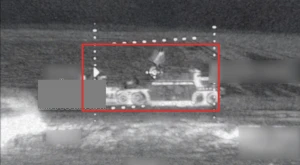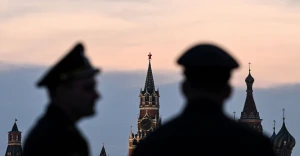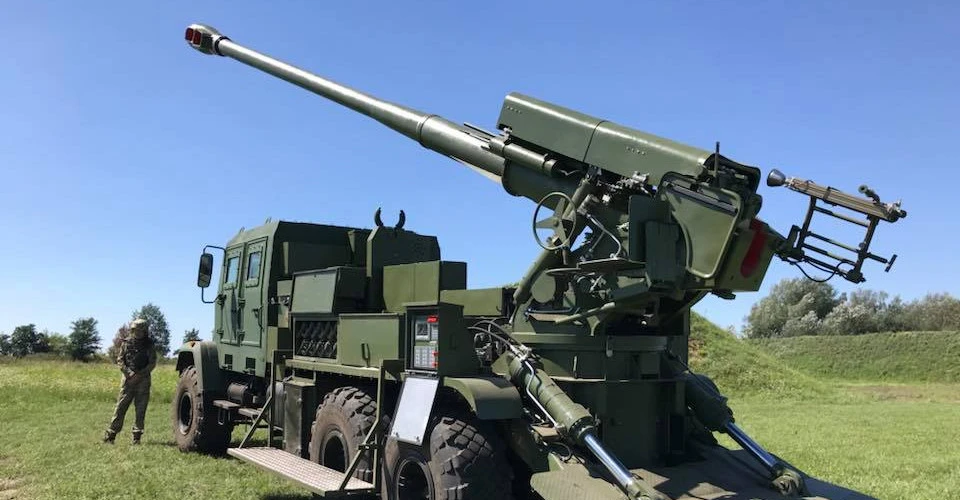
Ukraine's military industry is developing. But is it fast enough?
Ukraine needs to rebuild its domestic defense industry so that its military does not have to rely on the West for years. But will it be possible to do so in time?
The New York Times highlights this issue in its article .
The Russian military machine has already quadrupled its production of weapons for round-the-clock operations. Ukraine is losing territory in some key areas, including the strategically important eastern city of Avdiivka, while the package of American aid is still pending in Congress. Meanwhile, European defense companies are cautiously opening their facilities in Ukraine, major American arms manufacturers have yet to commit support while the country is at war.
It is widely recognized that Ukraine needs to rebuild its domestic defense industry so that its military does not have to rely on the West. Can this be done in time to change the war scenario, where Ukraine will be even more vulnerable without further US military assistance?
The New York Times writes that Ukrainian military engineers have already demonstrated remarkable skill in modernizing old weapon systems with more modern firepower. According to Ukrainian government documents reviewed by the outlet, Ukrainian defense companies have built three times more armored vehicles in the past year than they did before the war, and production of anti-tank missiles has quadrupled.
According to an analysis of Ukraine's military budget until 2030 conducted by the defense analytical company Janes, funding for research and development will increase eightfold this year—from $162 million to $1.3 billion. Military procurement has surged to nearly a 20-year high of almost $10 billion in 2023 compared to pre-war levels of around $1 billion per year.
“We say that death to the enemy starts with us,” Alexander Kamyshin, Ukraine’s Strategic Industries minister, said in an interview.
“It’s about showing that we don’t sit and wait until you come help us,” Kamyshin said. “It’s about trying to make things ourselves.”
Some types of weaponry are particularly difficult to manufacture in Ukraine. Among them are 155-millimeter artillery shells, which are extremely necessary on the battlefield. However, everything depends on imported raw materials and licensing rights from Western manufacturers or governments. Kamyshin noted that domestic production of 155-millimeter shells is already "on the way," but did not specify a timeline.
The government in Kyiv plans to spend approximately $6 billion this year on domestically produced weapons, including a million drones, but, according to Kamyshin, ”we can produce more than we’ve got funds available.”
However, a long period of decline can be difficult to overcome. The publication cites the example of the 2S22 Bohdan artillery gun. To restart production, officials had to track down the original designers and engineers of the weapon, some of whom were doing military work all over Ukraine.
"For the Russians, this was a huge surprise," noted Major Myroslav Hai, an officer in the Ukrainian army who helped liberate the island. "They couldn't understand how artillery could be used at such a distance."
European political leaders and business leaders, who see new market opportunities, promote the development of military production in Ukraine
The German Rheinmetall and the Turkish Baykar are building factories in Ukraine. In March, the French Minister of Defense announced that three French companies producing drones and ground military equipment are nearing similar agreements. Last month, Germany and France announced the creation of a joint venture through the defense conglomerate KNDS to manufacture components for tanks and howitzers in Ukraine, and later, entire weapon systems.
According to experts, Ukrainian military personnel have deployed air defense systems around some of the most important weapons manufacturing plants. It is quite likely that factories with foreign capital will be primarily located in the western part of the country, further away from the front line, with additional air defense protection.
Christian Seear, the Chief Operating Officer of the British military contractor BAE Systems in Ukraine, said that even the initial steps by foreign manufacturers send "an important signal – that it is possible to enter Ukraine and establish production."
According to Mr. Seear, although BAE Systems plans to manufacture weapons in Ukraine in the future, the company is currently focused on a "fix it forward" approach, repairing battle-damaged weapons at plants in Ukraine to quickly return them to the front lines. Many of the weapons used in ground warfare in Ukraine, including M777 and Archer howitzers, Bradley and CV90 combat vehicles, and Challenger 2 tanks, are manufactured by BAE Systems.
According to Ukrainian and American officials, as of today, no major American arms manufacturer has announced plans to open production lines in Ukraine. However, over the past few weeks, some senior-level executives have visited Kyiv, meeting with Mr. Kamishin and other officials, while the Biden administration organized meetings for Ukrainian leaders and American military contractors in December.
The assistance to Ukraine in rebuilding its defense industry has become even more crucial as Republicans in Congress have blocked the allocation of $60 billion in military and financial aid to Ukraine.
Taylor stated that American firms had numerous opportunities to invest in other countries globally. He emphasized that in this case, U.S. national interests were at stake, indicating that they would take additional steps to enhance these relationships.
Taylor proposed the establishment of a joint venture between Ukrainian and American companies, focusing on increasing the production of 155-millimeter artillery shells, given their critical importance.
European manufacturers are already entering this market.
Oleksandr Syrskyi, the Commander-in-Chief of the Armed Forces of Ukraine, assured in an interview with Ukrainian state media published on Friday that if Europeans are involved in the development to the extent they promise, he believes that over time, we will solve the issue of “ammunition hunger.”
Although Ukrainian manufacturers are prohibited from exporting weapons until the end of the war, Kamyshin seems to be aiming to compete with foreign arms manufacturers.
After he was appointed minister in March 2023, Kamishin visited nearly all the arms factories in Ukraine and stated that he saw an industry in dire need of overhaul. At some damaged plants, workers were laboring, while at others, rockets were being assembled by hand.
At the same time, according to him, production is now operating more smoothly. He still receives daily updates on the status of critically important assembly lines to quickly identify breakdowns and address them promptly.
"We are doing everything faster and cheaper, and it's working," admits Kamyshin.



- News











































